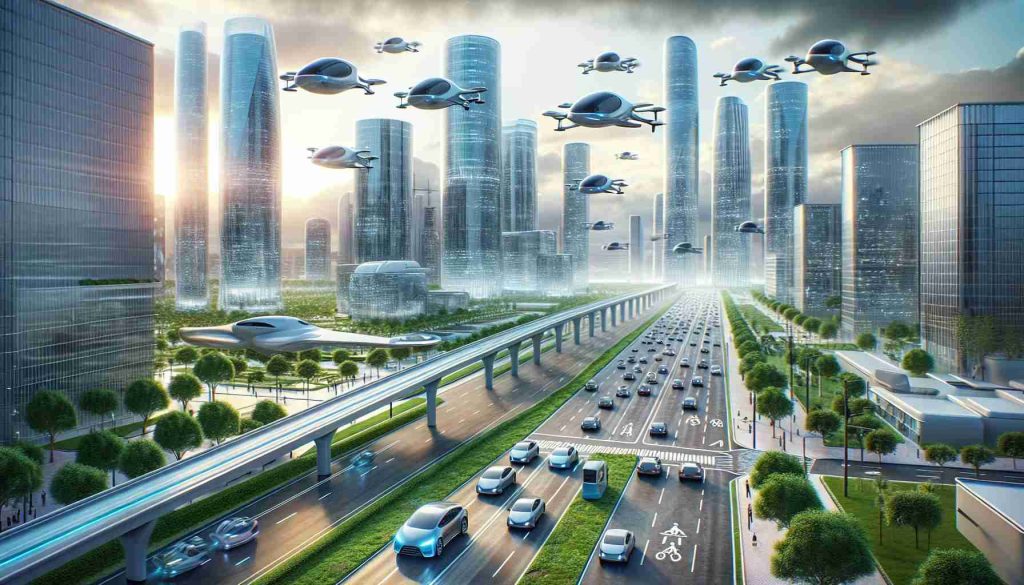In a groundbreaking event reminiscent of a Hollywood blockbuster premiere, a visionary entrepreneur unveiled the Cybercab and Robovan, cutting-edge vehicles set to revolutionize the transportation industry. The scene was set at the Warner Bros studios in Burbank, California, where innovation took center stage as the magnate introduced the world to a fleet of autonomous vehicles unlike anything seen before.
A glimpse into the future reveals a landscape where self-driving cars are the norm, where passengers can relax and enjoy the ride without the need for traditional controls. The concept, spearheaded by the entrepreneur, envisions a future where artificial intelligence takes the wheel, ushering in a new era of transportation efficiency and safety.
With an eye on accessibility, the vehicles are projected to be priced affordably, making them accessible to a wide range of consumers. Operating costs are expected to rival or even undercut public transportation expenses, signaling a potential shift in how individuals commute and travel.
As the world eagerly anticipates the arrival of these futuristic vehicles, questions linger about production costs, manufacturing locations, and future business projections. Yet, one thing remains clear – the dawn of autonomous transportation is on the horizon, poised to reshape the way we think about mobility and connectivity in the modern age.
With each innovation unveiled, the boundaries between automotive and technology sectors blur, signaling a convergence that promises to redefine the very fabric of our daily lives. The future of transportation has arrived, and it looks brighter and more exhilarating than ever before.
The Future of Transportation: Expanding Horizons and Unveiling New Realities
In the wake of the Cybercab and Robovan debut, the transportation landscape is rapidly evolving, pushing boundaries and sparking imagination. As we peer into the future, new realities emerge, offering both promise and challenges that demand attention.
Key Questions and Answers:
1. What impact will autonomous vehicles have on urban infrastructure and city planning?
– Autonomous vehicles could potentially reduce the need for parking spaces, leading to redesigned urban spaces focused on pedestrian-friendly environments and green spaces.
2. How will cybersecurity be addressed to prevent hacking of autonomous vehicles?
– Enhanced cybersecurity measures and protocols are being developed to safeguard autonomous vehicles from cyber threats, ensuring passenger safety and data protection.
3. What role will public transportation play in an era dominated by autonomous vehicles?
– Public transportation may need to adapt by integrating autonomous technology to enhance efficiency and connectivity within existing transit systems.
Challenges and Controversies:
– Regulatory Frameworks: Establishing consistent regulations and standards for autonomous vehicles across different regions remains a pivotal challenge.
– Ethical Dilemmas: Addressing ethical considerations such as decision-making algorithms in emergency situations poses complex moral dilemmas.
– Infrastructure Upgrades: Upgrading roads, signals, and communication networks to support autonomous vehicles necessitates substantial investment and coordination.
Advantages and Disadvantages:
Advantages:
– Safety: Autonomous vehicles have the potential to significantly reduce traffic accidents caused by human error.
– Efficiency: Optimized routes and smart navigation can enhance traffic flow and reduce travel times.
– Accessibility: Autonomous vehicles offer mobility solutions for individuals with disabilities and the elderly.
Disadvantages:
– Job Displacement: The widespread adoption of autonomous vehicles may disrupt industries reliant on human drivers, impacting employment.
– Reliability: Technical failures or system malfunctions in autonomous vehicles could lead to safety concerns and public distrust.
– Privacy Concerns: Data collection and sharing in autonomous vehicles raise privacy issues that need robust safeguards.
As we embark on this transformative journey into the future of transportation, it is crucial to address these fundamental questions, navigate through challenges, and embrace the opportunities presented by technological innovations. The road ahead is dynamic and filled with possibilities that promise to redefine our relationship with mobility and the world around us.
For more insights on the latest advancements in transportation technology, visit U.S. Department of Transportation.










More Stories
New Legislation Imposes Fines on Airlines for Hand Luggage Charges
Expanding Renewable Energy Contracts Leads to Legal Accusations
Changes in the Tax System for Independent Workers in 2025